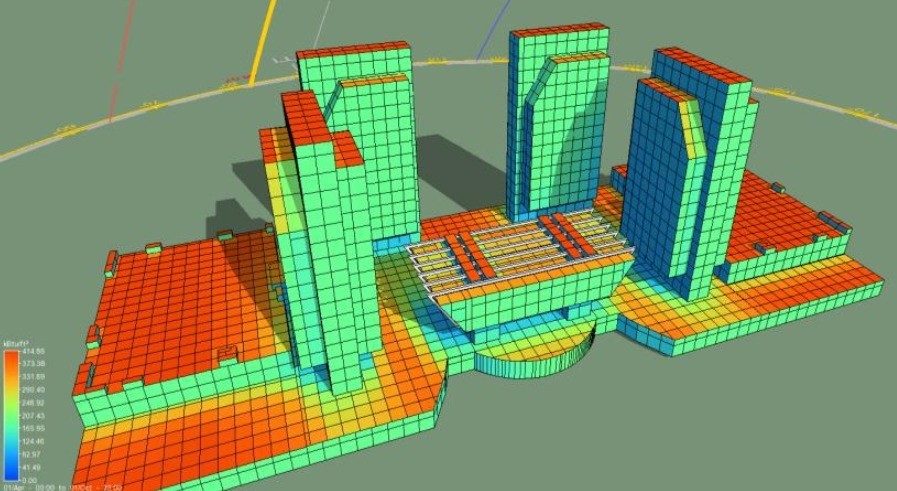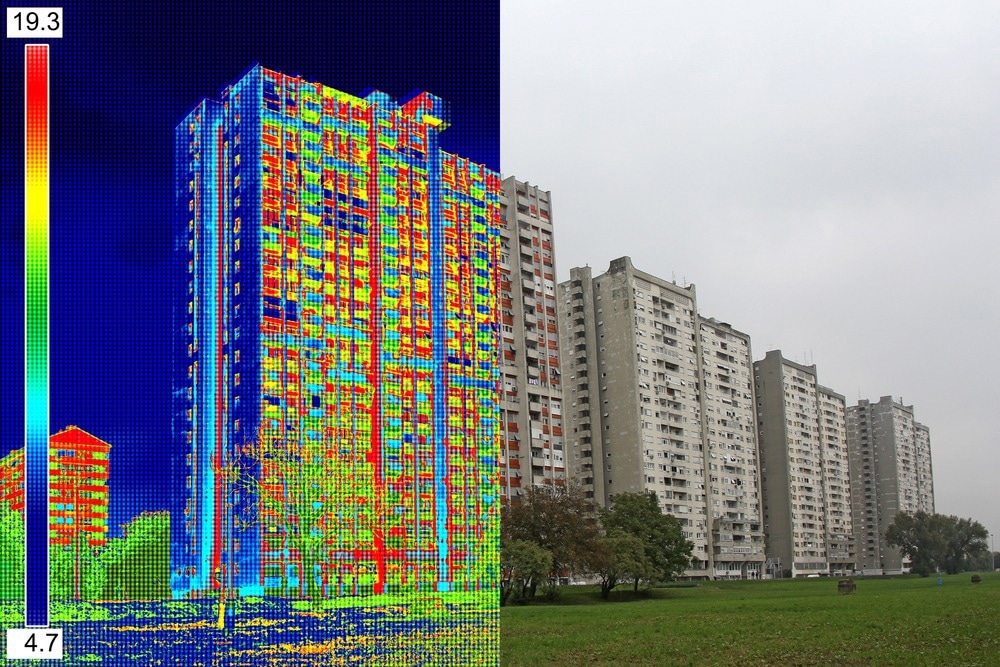The significance of building energy modeling (BEM) has increased in the construction industry as it provides valuable insights into a building’s energy performance. BEM allows for simulating a building’s energy usage, helping to optimize energy efficiency, reduce costs, and minimize environmental impact.
This article will provide an overview of BEM, highlight its differences from building information modeling (BIM), and explore how it can contribute to sustainability. We will also discuss some of the challenges associated with implementing BEM.
What is Building Energy Modeling (BEM)?
Building Energy Modeling (BEM) is a computerized simulation technique that assesses the energy efficiency of buildings. With the aid of specialized software, BEM can replicate a building’s energy usage by taking into account factors such as its size, location, orientation, and internal systems like HVAC and lighting.

BEM offers valuable insights to designers, architects, engineers, and building owners, enabling them to optimize the building’s design for enhanced energy efficiency.
Understanding the Difference Between BEM and BIM
While Building Information Modeling (BIM) and Building Energy Modeling (BEM) are sometimes used interchangeably, they are distinct concepts. BIM is a 3D modeling method used to create building structures and systems, including mechanical and structural components. On the other hand, BEM is utilized to evaluate the energy performance of buildings based on these design elements.
BIM provides a digital representation of the building, while BEM focuses on providing insights into its energy efficiency.
Three Ways BEM Can Lead To Sustainability
Building Energy Modeling (BEM) can lead to sustainability in several ways, including:
- Energy Efficiency Optimization. BEM can identify energy-saving measures during the design and construction phase by simulating a building’s energy consumption. This can include selecting efficient HVAC systems, improving insulation, and utilizing renewable energy sources.
- Cost Savings. BEM can optimize energy efficiency, leading to reduced energy bills over a building’s lifetime and providing cost savings for owners and occupants. BEM can also identify potential maintenance issues during the design and construction phase, leading to long-term cost savings.
- Environmental Impact Reduction. BEM can lower a building’s environmental impact by optimizing energy efficiency, which reduces greenhouse gas emissions associated with energy consumption. This contributes to mitigating the effects of climate change and promoting sustainability.
Compliance with Regulations: BEM can help ensure compliance with energy codes and regulations, such as the International Energy Conservation Code (IECC) and LEED (Leadership in Energy and Environmental Design) certification requirements. Compliance with these regulations demonstrates a building’s commitment to sustainability and can provide market advantages.

What Are The Challenges In Implementing BEM?
Challenges to implementing Building Energy Modeling (BEM) encompass various aspects, including:
- Lack of Awareness and Understanding. Architects, engineers, contractors, and building owners may not be aware of the benefits of BEM or may not fully understand how it works. This can result in hesitation to invest in BEM implementation or a lack of comprehension about its potential advantages.
- Data Availability and Quality. BEM relies on accurate and detailed information about a building’s physical characteristics, such as its geometry, materials, and equipment. However, obtaining such data may not always be readily available or accurate, especially for existing buildings. Gathering and verifying data can be time-consuming and costly. Additionally, the quality of data can significantly impact the accuracy of BEM simulations, which can affect the energy performance of the building.
- Software Complexity. BEM software can be complex and requires expertise to use effectively. Additionally, there are numerous software tools available, each with its own advantages and disadvantages. Selecting the right software for a particular project can be challenging, especially for those new to BEM.
Cost. Implementing BEM can be costly, particularly for smaller enterprises or those with limited budgets. Expenses may include purchasing software licenses, data gathering and verification, and model calibration. Perceived high costs of BEM implementation may deter building owners and contractors from investing in it. - Integration with Other Design Tools. BEM software needs to seamlessly integrate with other design tools, such as BIM, to be effective. However, integrating BEM software with other tools can be challenging and may require additional software or expertise.
- Culture of Manual Data Input. Manual data input may be prevalent in the industry, and some may be resistant to adopting automated technologies like BEM. This can result in inaccurate simulations and errors during the data collection process.
Building Energy Modeling (BEM) has become increasingly significant in the construction industry due to its ability to provide valuable insights into a building’s energy performance. BEM allows for the simulation of a building’s energy usage, leading to optimization of energy efficiency, cost savings, and reduced environmental impact. BEM can contribute to sustainability in various ways, including energy efficiency optimization, cost savings, environmental impact reduction, and compliance with regulations.
However, there are challenges associated with implementing BEM, including a lack of awareness and understanding, data availability and quality, software complexity, cost considerations, integration with other design tools, and a culture of manual data input. Overcoming these challenges requires education and awareness about the benefits of BEM, ensuring accurate and detailed data, selecting appropriate software tools, managing costs, integrating BEM with other design tools, and promoting a culture of automation and accuracy in data input.
Despite the challenges, the potential benefits of BEM in terms of energy efficiency, cost savings, and sustainability make it a valuable tool for the construction industry. As the industry continues to prioritize sustainability and energy efficiency, BEM is expected to play a critical role in optimizing building performance and contributing to a more sustainable built environment.

Do you want to see more content like this in the future? Subscribe to Pinoy Builders for FREE today and stay in the loop for the latest news and updates on the Philippine construction industry!
References:
- Gigante, M. (2019, November 12). Building Energy Modeling: The Future of Sustainability. G2. https://www.g2.com/articles/building-energy-modeling-bem-sustainability
- What is Energy Modeling & Building Simulation. (n.d.). Energy-Models. https://energy-models.com/what-is-energy-modeling-building-simulation
- About Building Energy Modeling. (n.d.). Energy.gov. https://www.energy.gov/eere/buildings/about-building-energy-modeling



